How do you ensure the longevity and safety of your cosmetic formulations? The answer lies in the strategic use of safe cosmetic preservatives, vital for protecting products from harmful bacteria.
Our deep understanding of cosmetic science and safety positions us as a credible source, ready to guide you through the complexities of preservation.
Safe cosmetic preservatives are not just a regulatory requirement, they are a commitment to quality and consumer safety, ensuring your products stand the test of time with efficacy and safety.
In this guide, we’ll explore cosmetic preservation essentials, covering preservative types, selection criteria, natural alternatives, and more, to help you understand these crucial components effectively.
Read on for expert insights on cosmetic preservation!
Preserving cosmetics is crucial to maintaining their safety and effectiveness over time. By adding preservatives, products are shielded against the growth of harmful microorganisms like bacteria and fungi. This protection ensures cosmetics remain safe to use from their production all the way to their application by consumers.
Knowledge of cosmetic preservation is fundamental for product development and quality assurance. Preservatives play a key role in extending the shelf life of products by preventing contamination. As a result, consumers can use their favorite beauty items with confidence, knowing they are protected against deterioration and potential harm.
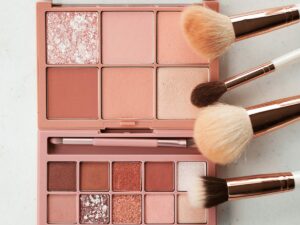
Transitioning from the basics of cosmetic preservation, it’s clear that the choice of preservatives is vital in ensuring product safety and efficacy. Here are the types of safe cosmetic preservatives:
Phenoxyethanol is a versatile preservative known for its efficacy against a wide range of microorganisms. It is particularly valued for its low toxicity and minimal irritation potential, making it suitable for use in many cosmetic formulations. This preservative is compatible with many other cosmetic ingredients, providing a stable and effective preservation solution.
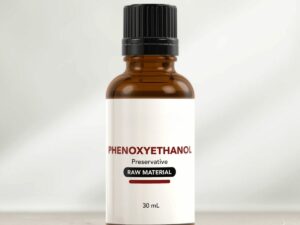
Ethylhexylglycerin is a conditioning agent and preservative enhancer that works together with other preservatives to boost their effectiveness. It is appreciated for its skin-conditioning properties that contribute to a smoother skin feel. So, what’s my point? By using this, formulators can achieve effective preservation with added skin care benefits, making it a favored choice in skin care and cosmetic products.

Sodium benzoate is a preservative commonly used in food that is also effective in acidic cosmetic formulations. It works by preventing the growth of mold, yeast, and bacteria. Because of its safety profile and effectiveness in a specific pH range, it is commonly used in personal care products such as shampoos, conditioners, and other acidic formulations.
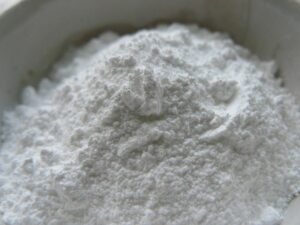
After exploring the various types of safe cosmetic preservatives, it’s critical to understand the key criteria that make these preservatives suitable for use in cosmetic formulations. Here are key criteria to look at:
A preservative must demonstrate broad-spectrum efficacy, meaning it should effectively prevent a wide range of microorganisms, including bacteria, fungi, and yeasts. This ensures comprehensive protection of the cosmetic product throughout its lifespan. Broad-spectrum efficacy is critical because it prevents the need for multiple preservatives, simplifying formulations and reducing potential for irritation.
The preservative should not adversely affect the product’s aesthetics, including its scent, color, and texture. An ideal preservative is one that integrates smoothly into the formulation, maintaining the product’s intended sensory qualities and consumer appeal. You see my point, right? This is essential for consumer satisfaction and the overall success of the product in the market.

Preservatives should remain stable under expected storage conditions and throughout the product’s shelf life. They must also be compatible with other ingredients in the formulation, not causing any reactions that could compromise the product’s safety or efficacy. Stability and compatibility are fundamental to ensuring the long-term effectiveness of the preservative and the integrity of the cosmetic product.
A comprehensive safety profile and toxicological data must support the use of the preservative, indicating low risk of irritation, sensitization, and toxicity. This includes conducting dermatological tests to assess the preservative’s safety on skin. A strong safety profile is essential to protect consumer health and uphold the brand’s reputation for safety and reliability.
Moving beyond its key criteria, it’s clear that the demand for natural alternatives is on the rise as consumers are looking for safer products with cleaner labels. Here are natural preservatives that stand out:
This extract is valued for its ability to fight germs, serving as a strong preservative in cosmetics. It is derived from the seeds and pulp of grapefruits, providing a natural method to extend product shelf life. Matter of fact, this is favored in formulations aimed at offering a gentler preservative solution. Nako Cosmetics incorporates this into their cosmetic development to guarantee quality and safety.
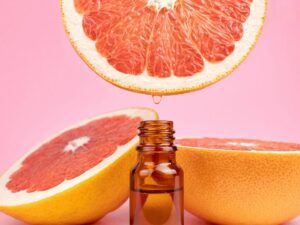
Rosemary extract, valued for its dual role in cosmetics as a natural preservative and antioxidant, is forecasted by LinkedIn to grow at a 4.33% CAGR. Derived from rosemary leaves, it enhances the stability and quality of cosmetic formulas. Its natural antioxidant properties help shield products from deterioration caused by exposure to oxygen, thereby prolonging their shelf life.
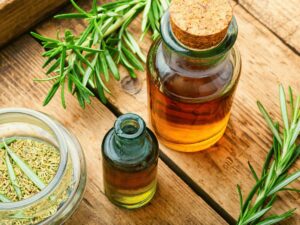
Fermented preservatives are a cutting-edge approach in the cosmetic industry, derived from the fermentation process of natural ingredients like fruits and plants. These preservatives prevent the growth of harmful microbes and enrich products with additional skin-friendly benefits. For example, lactobacillus ferment, a popular choice, offers antimicrobial properties while also soothing and hydrating the skin.
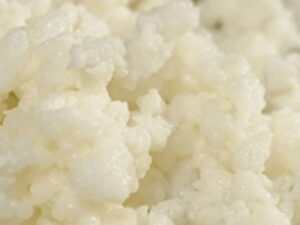
Vitamin E is a natural antioxidant that helps keep cosmetic products fresh for longer by preventing them from spoiling due to exposure to air or other reactive substances. This nutrient is not only beneficial for the skin but also helps maintain the freshness and efficacy of formulations. Its protective action against oxidation makes it a preferred choice for preserving products naturally.
Shifting from natural preservatives, being aware of certain preservatives to avoid due to its health risks or environmental impact is critical. Here are the preservatives that are often recommended to avoid:
Formaldehyde donors, though effective preservatives, release formaldehyde slowly which can be a skin irritant and allergen. This has led to increased worry among consumers and more attention from regulators due to its potential carcinogenic properties. To address this, many products now avoid these ingredients to meet the demand for safer alternatives.
Isothiazolinones, including methylisothiazolinone (MIT) and methylchloroisothiazolinone (CMIT), are synthetic preservatives known for their antimicrobial properties. Yet, they’ve been linked to skin sensitivity and allergies, urging individuals with sensitive skin to exercise caution. Regulatory bodies have restricted their use in some products, and businesses are seeking safer and less irritating alternatives.
Propylene Glycol is a synthetic liquid substance that absorbs water and is used as a solvent, skin-conditioning agent, and preservative in cosmetics. Although generally recognized as safe, it can cause skin irritation and allergic reactions in some individuals, especially those with sensitive or compromised skin barriers. Its use is becoming less common in products marketed as gentle or for sensitive skin.
Triclosan is an antimicrobial agent that was widely used in personal care products, like antibacterial soaps and toothpastes. However, worries about its effects on the environment, including its role in antibiotic resistance and hormone disruption in wildlife, have led to bans and restrictions in several countries. As a result, many companies are phasing out triclosan in favor of safer and more eco-friendly preservatives.
Adhering to industry standards is crucial for safe cosmetic preservatives, ensuring compliance with legal and ethical guidelines while avoiding harmful substances. Here are the key regulations to follow:
The European Union (EU) has established strict guidelines for cosmetic products, including the use of preservatives. All cosmetic preservatives must undergo a meticulous safety assessment before they can be approved for use. This ensures that products sold in the EU market are safe for consumers and environmentally friendly.
In the United States, the FDA supervised the safety of cosmetic products. The FDA does not give the green light to cosmetic ingredients before they are sold, but it does oversee them to make sure they are safe for the skin. Businesses are responsible for ensuring their products are safe and properly labeled, according to FDA guidelines.
The ISO provides globally recognized standards for cosmetic safety and quality. ISO standards help businesses ensure their products meet international safety requirements. Following these standards helps companies achieve consistency in product quality and safety across global markets. Nako Cosmetics adhere to these meticulous standards, ensuring products meet international safety requirements.
The CIR is an independent panel of scientific experts that evaluates the safety of cosmetic ingredients in the US. It all boils down to trusting their insights to ensure product safety and optimize development. The CIR’s assessments and recommendations help guide businesses in choosing safe preservatives for their products. Their evaluations are based on scientific data and are widely respected in the industry.
Following the exploration of industry standards, it is also vital to address the challenges in this area to ensure the safety and efficacy of products. Here are some challenges faced with cosmetic preservation:
The cosmetic industry is evolving rapidly with new technologies emerging at a fast pace. This creates a challenge for preservative systems which must adapt to new formulation technologies and delivery systems. Keeping preservation methods up-to-date with these advancements is crucial but challenging due to the need for continuous research and development.
Many cosmetic products contain active ingredients that are sensitive to preservatives which can lead to stability issues or reduced efficacy of the active ingredients. Finding preservatives that are compatible with a wide range of active ingredients is challenging. This requires careful selection and testing to ensure the stability and effectiveness of the final product.
| Consideration | Description |
| Active Ingredient Compatibility | Active ingredients in cosmetics may be sensitive to certain preservatives, necessitating careful selection to ensure compatibility and stability. Brands must conduct compatibility tests to assess the interaction between active ingredients and preservatives, preventing potential degradation or loss of efficacy. |
| Preservative Selection | Selecting preservatives that are compatible with a wide range of active ingredients is crucial for maintaining product stability and efficacy. Brands should prioritize preservatives with broad-spectrum antimicrobial properties and low reactivity to minimize the risk of adverse interactions with active ingredients, ensuring product safety and longevity. |
| Stability Testing | Conducting stability testing is essential to evaluate the interaction between active ingredients, preservatives, and other formulation components over time. Brands should assess factors such as pH, temperature, and exposure to light and air to identify potential stability issues and optimize formulation parameters for maximum efficacy and shelf life. |
| Formulation Optimization | Optimizing cosmetic formulations involves balancing the concentration of active ingredients, preservatives, and other additives to achieve desired product performance while ensuring stability and safety. Brands must fine-tune formulation parameters through iterative testing and adjustment to optimize the integration of active ingredients and preservatives. |
| Regulatory Compliance | Compliance with regulatory guidelines and standards governing cosmetic ingredients and formulations is paramount. Brands must ensure that their products meet regulatory requirements for safety, efficacy, and labeling, including the use of approved preservatives and active ingredients at appropriate concentrations to maintain product integrity and consumer trust. |
There is a growing consumer demand for cosmetics labeled as “free-from” certain chemicals, including preservatives. Meeting this demand while ensuring product safety and efficacy is a significant challenge. As a matter of fact, businesses must seek alternative preservative systems that satisfy consumer preferences without compromising the product’s integrity.
The issue of antimicrobial resistance is becoming increasingly relevant in cosmetic preservation. Using certain preservatives too often can lead to bacteria and fungi becoming resistant. Businesses must be mindful of this global health concern by carefully selecting preservatives, using them at effective yet safe concentrations, and considering the impact of their use on microbial resistance patterns.
Choosing cosmetics with safe preservatives is crucial for consumer health and safety, given the challenges in preservation. Here are the key aspects to consider for an attentive selection of cosmetics:
Eco-certified products use preservatives that meet strict environmental and health safety standards. This certification ensures that the preservatives in these products are not only safe for consumers but also for the environment. Looking for eco-certification labels can help consumers make choices that are both health-conscious and eco-friendly.
Individuals with sensitive skin need to be attentive about avoiding cosmetics containing irritating preservatives. Avoiding ingredients like formaldehyde donors and isothiazolinones, which are known irritants, can help in preventing adverse skin reactions. Choosing products formulated for sensitive skin, often marked as hypoallergenic, can further mitigate the risk of irritation.
The ability to decode ingredient lists on cosmetics is a key skill in identifying safe preservatives. Focus on recognizing names of preservatives that have a track record for safety, such as ethylhexylglycerin or phenoxyethanol. Here’s why this is important, by being familiar with these names, consumers can easily select products that align with safety standards and personal preferences.
For those inclined towards natural beauty products, identifying cosmetics that utilize natural preservatives is key. For example, natural options, such as extracts from grapefruit seed or rosemary, offer a gentler alternative to synthetic preservatives. Opting for products with these ingredients can satisfy preferences for cleaner and more green beauty solutions.
For some insightful reads, we’ve curated a list of recommended articles just for you:
Still haven’t found what you’re looking for? Don’t hesitate to contact us. We’re available around the clock to assist you.
Safe cosmetic preservatives are vital for maintaining product integrity and consumer safety, crucial for every cosmetic brand. This guide equips you with knowledge to select preservatives for efficacy and compliance, strengthening your dedication to excellence and consumer protection.
If you are in search of a trusted manufacturer expert in incorporating safe cosmetic preservatives, look no further than Nako Cosmetic. Contact us to enhance your product line’s safety and quality.
Own Your Private Label Cosmetic Line Is No Longer Difficult Here!
Don't let questions and needs hold you back. Reach out to us today.
How to Start Your Beauty Business?